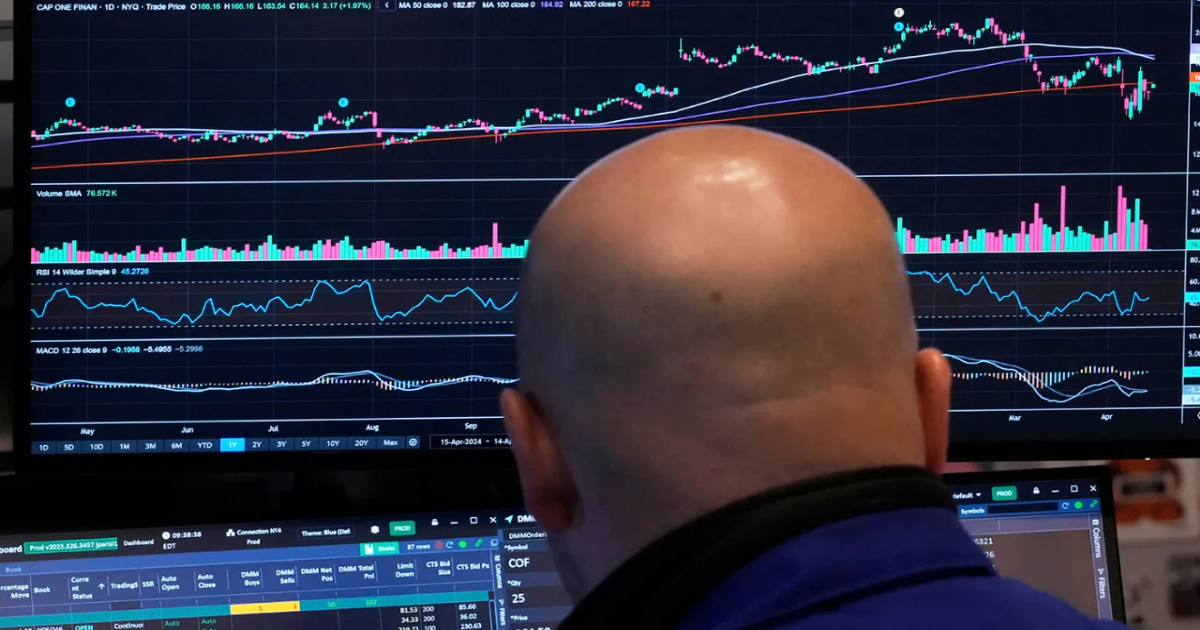Wall Street and Washington, D.C., are wading through a surge of economic data this week as markets and policymakers attempt to game out the results of President Trump’s policies.
After 100 days of Trump’s first term, U.S. growth took a sharp downward turn as a surge of imports took a chunk out of gross domestic product (GDP). Consumer spending showed signs of slipping, and prices pressured seemed to fade slightly in the first quarter.
While the new data showed some signs of economic resilience, experts are concerned that the success of the first quarter may be borrowed in part from the rest of the year.
Here’s a roundup of the latest economic data to show where the economy might be heading.
First-quarter U.S. economic growth fell into negative territory Wednesday, mostly due to a surge in imports ahead of major new tariffs announced early in April.
Gross domestic product (GDP) declined by 0.3 percent in the first quarter of 2025 after solid growth throughout 2024, including 2.4 percent in the fourth quarter and 3.1 percent in the third quarter.
“Imports surged at a 41.3 percent annual rate in the first quarter, with goods imports rising at a 50.9 percent rate, leading to the first quarter of negative growth in three years,” economist Dean Baker of the Center for Economic Policy and Research wrote in a Wednesday analysis.
Exempting the import surge, economists said the broader growth pattern was in line with expectations.
“Core economic growth was generally as anticipated,” Olu Sonola, head of U.S. economic research at Fitch Ratings, wrote in a commentary. “The frontrunning of purchases by consumers and businesses ahead of expected tariffs will make the data noisy for a few months.”
Trump announced tariffs April 2 that brought the overall U.S. tariff rate to about 25 percent.
While he paused his differential tariffs on individual countries and scaled back additional auto taxes this week, his 10-percent general tariff and triple-digit import taxes on China have brought the U.S. tariff rate up to the highest level in more than a century.
Several economists noted business investment accelerating by almost 10 percent, driven by a 22.5 percent rise in equipment expenditures.
Inflation as measured in the March personal consumption expenditures (PCE) price index moderated to an annual increase of 2.3 percent from 2.7 percent in February — a sizable drop.
“Perhaps we should hold off on ringing the stagflation bell just yet,” Scott Helfstein, head of investment strategy at Global X, wrote in a commentary. “If tariffs ex-China are capped at 10 percent, inflation could be contained.”
Despite the dip in inflation, economic actors from consumers to central bankers are expecting Trump’s tariffs to increase price pressures in the future.
Eighty-nine percent of U.S. adults believe tariffs will increase prices, a Gallup poll published this week found. Eighty-two percent of Republicans and 92 percent of Democrats are predicting higher prices.
Federal Reserve Chair Jerome Powell observed earlier this month that shorter term inflation expectations have been moving up.
“Both survey- and market-based measures of near-term inflation expectations have moved up significantly, with survey participants pointing to tariffs,” he said.
Consumer spending saw a healthy surge in March, with expenditures increasing by $135 billion, or 0.7 percent.
Spending on motor vehicles and parts jumped by a whopping 57 percent ahead of auto tariffs scheduled for May 3, which the White House scaled back Tuesday with a rebate program for automakers.
While strong levels of consumer spending generally bode well for economic performance, several economists saw the March surge as the preface for a steep spring fall.
“This artificial front-loading of demand sets the stage for a sharper demand cliff in [the second quarter] — a far more troubling phase of the ongoing economic slowdown,” EY economist Gregory Daco wrote in a commentary.
Uncertainty about the business outlook has been skyrocketing in recent months and was reflected in a Wednesday drop in private-sector payrolls as companies present the pause button on hiring.
The economy added 62,000 private sector jobs in March, according to ADP Research, about half of what economists were expecting, down from 147,000 in February and the lowest number since July of last year.
The slowdown echoes a fall in the number of job opening as recorded in the Labor Department’s March Job Openings and Labor Turnover (JOLTS) survey, released earlier this week.
Job openings fell to 7.2 million, close to the September number of 7.1 million openings that was the lowest since December 2020. Economists were expecting 7.5 million job openings for March.
“This means there is 1 job open for every unemployed jobseeker, down from 1.1 in previous months. This suggests job search times could be increasingly extended,” Mark Hamrick, economic analyst at Bankrate, observed Tuesday.
Economic sentiment among consumers is close to its second-lowest reading ever, as measured by the benchmark University of Michigan survey.
Consumer confidence in the Conference Board index dropped by 7.9 points in April to a level of 86.0, the lowest level since May 2020.
Consumer expectations in the survey dropped to a 13-year low of 54.4 — a level that made economists’ eyes pop.
“[This marks] its lowest since October 2011 when the post-Global Financial Crisis recovery was stalling and the Euro Crisis was escalating,” analysts for Deutsche Bank noted Wednesday.
“Consumer confidence at record-low levels,” Apollo Global Management economist Torsten Slok wrote in a recent analysis.
